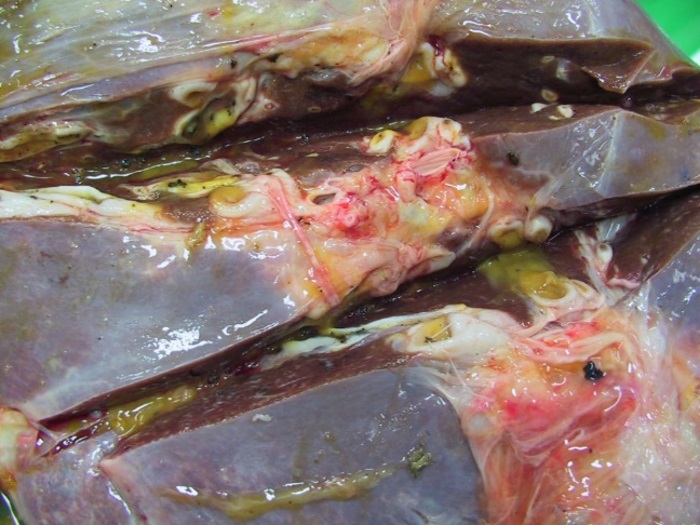Livestock farmers are warned that recent prolonged wet and mild weather has led to a late-flush of infective worm larvae on pasture, increasing the likelihood of parasitic disease in sheep, according to the NADIS Parasite Forecast and Merial Animal Health. Liver fluke also remains a significant threat to sheep and cattle this autumn, particularly across western regions of Scotland, North-West England and South Wales.
Heavy infestations of Trichostrongylus in store lambs and occasionally in gimmers are often seen from late-October, and throughout autumn. Outbreaks can be identified by the presence of black foetid diarrhoea and rapid weight loss, and will require treatment with an appropriate anthelmintic to prevent production losses over winter.
Where Haemonchus is present on farm, any larvae acquired towards the end of the grazing season will inhibit in the gut wall as temperatures drop. Inhibited larvae will not produce eggs, so faecal egg counts are not a reliable indicator of the presence of the worm. If flocks have a history of haemonchosis, an anthelmintic treatment which also treats the inhibited stage of the worm, will almost certainly be required.
Sioned Timothy, Veterinary Adviser for Merial Animal Health recommends that pre-tupping treatments for other roundworms be targeted at those at highest risk of heavy worm burdens; leaner ewes, gimmers and any sheep with dags. She says: “Healthy sheep with good body condition should not be wormed pre-tupping unless there is specific cause to do so, however any individuals with a body condition score 1.5 – 2 units less than the flock average should be assessed and wormed accordingly. If a high proportion of the flock are in poor condition veterinary advice should be sought.”
Parasite control in rams is often overlooked during the summer, and they may be carrying significant burdens into November which can exacerbate any loss of condition over the tupping period. Faecal egg counts should provide the basis for any treatments.
Sheep affected with acute liver fluke may simply be found dead without exhibiting any signs of illness. Here, post-mortem investigations are helpful in identifying the cause, to allow preventative measures to be taken to protect remaining animals. In less severe cases behavioural changes such as reduced grazing may be observed, plus sheep may exhibit rapid weight loss, abdominal pain and anaemia. Farm history together with forecasted regional risk periods will help determine the need to treat for fluke.
“Flocks at high risk of acute fluke disease will almost certainly have been treated with triclabendazole in the early autumn,” says Ms Timothy. “In western Scotland, north-west England and south Wales a second treatment with triclabendazole is likely to be necessary.
“In other western areas of the UK and eastern Scotland, the risk of acute fluke is reduced. Here, farmers should consult their vet or animal health adviser for advice, particularly where triclabendazole resistance is known or suspected.”
In contrast to sheep, most cattle do not suffer the effect of acute fluke disease, and the majority of liver fluke carried by cattle towards the end of the grazing season are at late-immature and mature stages. However, any level of fluke burden causes production losses. Cattle which have been exposed to the parasite on pasture should be treated at housing to optimise their growth potential over the entire winter period, and make the most of expensive feed.
Ms Timothy advises that if possible, cattle farmers should use an alternative flukicide to triclabendazole, to help preserve this important product for treating acute fluke in sheep. She says: “There are a number of alternative options, including those containing clorsulon (included in Ivomec® Super) closantel, or nitroxynil (Trodax®). Depending on the spectrum of activity of the flukicide used, a follow-up treatment several weeks later should be considered, to ensure complete removal of fluke before turnout.”
Any first and second-season grazing cattle housed over winter should receive a wormer at housing to prevent parasitic gastroenteritis (PGE) and potential Type II Ostertagiosis from inhibited larvae in the early spring.
“Autumn and winter is a critical period for parasite control, especially where fattening stock are concerned,” says Ms. Timothy. “Here, it’s really important that not only the right product for the parasite is chosen, but that meat withdrawal times are strictly adhered to. In some cases this may influence the choice available. A vet or SQP (Suitably Qualified Person) can advise on the most appropriate product for the circumstances.”


